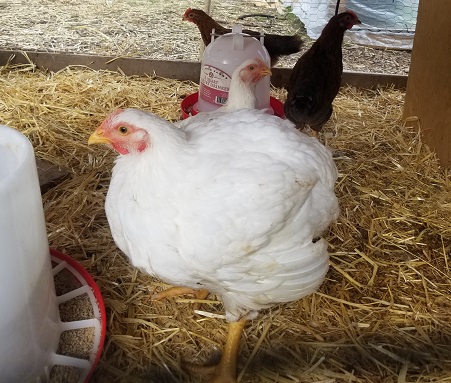Our family likes to eat meat. Before that yummy meal is on our plate it is a living breathing animal that God created. That means a lot to us. So much that we adopt a policy on our homestead, each animal we raise for food will have only 1 bad day.
Many of us have seen various documentaries shedding light on the food industry. How many of those animals we eat ever see sunlight? Do they get to rummage through the grass? The sad answer is few.
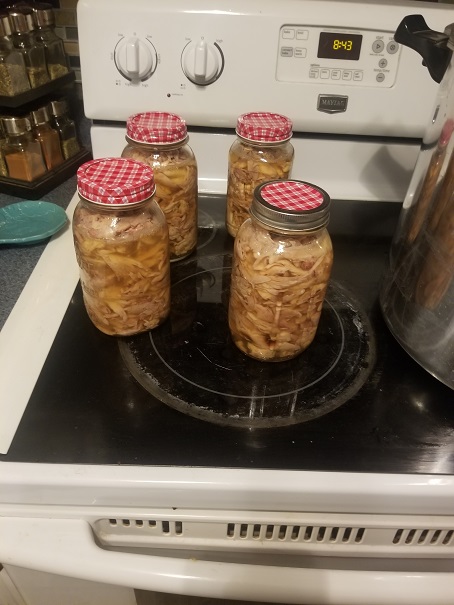
This could be the reason why you have turned to homesteading and raising your family’s meat. Maybe like us, you buy some meat locally through the farmers market, but this can come with a hefty price tag! And yes, we do sometimes pick what seems like the best quality meat at the grocery store. (What all those marketing labels mean and how the cost varies in the stores is beyond me.)
I will attempt to highlight the lives of our animals, some traits of the breeds, and why we have them.
The Egg Laying Hen
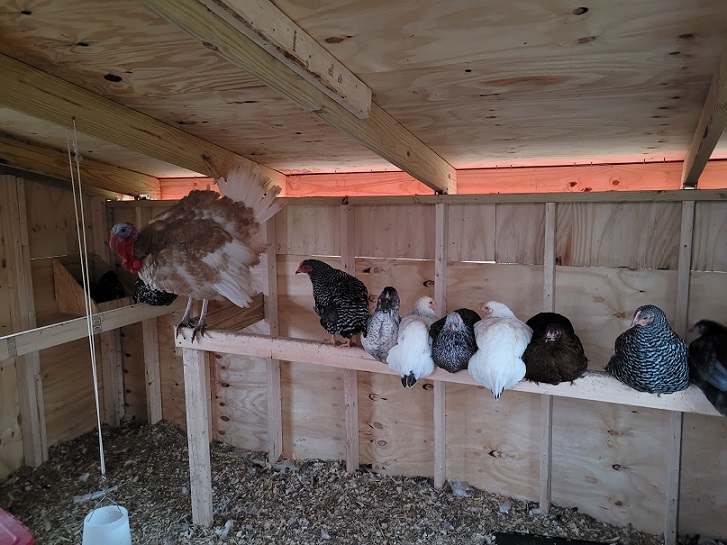
Each egg laying hen has a job on our homestead. Provide eggs!! We keep a wide variety of breeds because we enjoy seeing the mix of colors (this also makes naming them simpler).
Yes our hens have names. They are a part of this family homestead. It helps that we have a large variety of hens because it makes them easier to tell apart! We pick them up, we give them treats and they have the best possible hen life while they are with the flock.
We keep enough hens to have more eggs than our family eats allowing us to sell, trade, or give the extra away. Each year of an egg layer’s life will show a reduction in her egg capacity for the year. Generally, commercial operations will not keep a hen past 18 months, 2 years at most. The only egg laying hens that have transitioned to food on our homestead were over 3 years old. Our hens already had doubled the age of most of their peers!
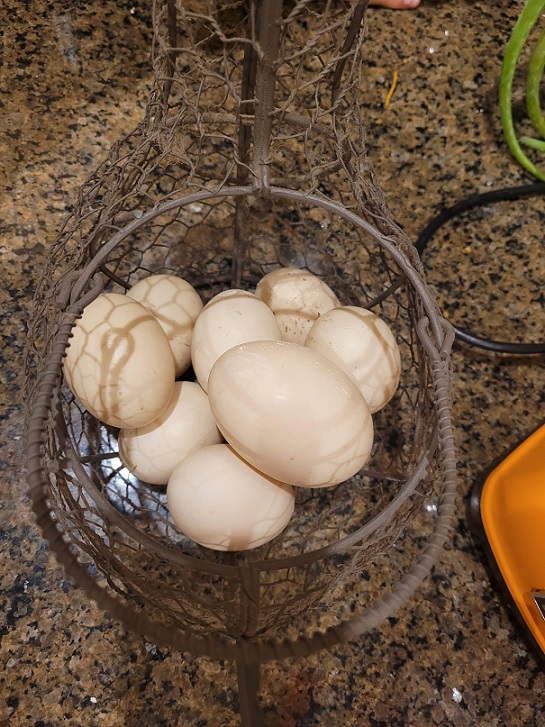
They spend their day running around outside, chasing bugs, and eating a choice of what is normally considered weeds! All the things our hens love!
When the time comes to rotate the flock, these birds serve us one last time. By providing a healthy source of food for our family. Old hens (stewing hens) have tough meat so they are processed, cooked, and pressure canned to preserve the meat and also remove the toughness. A much better choice than the can of chicken in the grocery store, but still provides the same convenience!
It is hard to say goodbye to an animal you raised from a chick. But it is part of our food circle that we accept and do not take lightly.
The Muscovy Duck
Ducks generally lay less eggs than chickens, but the reduction in eggs laid each year is much less. (Muscovy ducks are our favorite of the breeds we have raised. Read more about them here).
We have been eating duck eggs for years now and absolutely love them! They are generally the less common treat rather than our main source of eggs. Why? Our ducks sit on and hatch their eggs! We currently have 3 ducks sitting on nests providing sustainable potential for more eggs, meat, and income.
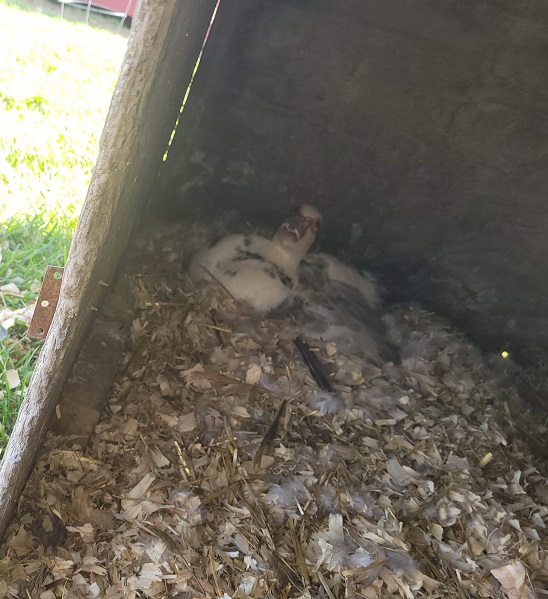
A duck will keep laying well into the 5 year range. One of our broody ducks is working on hatching out a nest now, she is approximately 4 years old and we have no intentions of removing her from the flock! She takes her mothering job seriously.
On to the ducklings! Nebula (4 year old mama duck) hatched 8 ducklings last year. There were 3 ducks and 5 drakes. At no point is that a ratio that can be maintained for the flock. Too many males will fight each other, and they will hurt the ducks as they constantly try to mate them. We had this issue with 1 drake and 3 ducks in the past.
The ducklings were raised 100% the natural way, following their mother around our yard until they were big enough to be on their own. We allowed them to grow full size (about 6 months for muscovies). The 5 drakes were butchered for food and the 3 ducks remained in the flock, 1 of which is currently sitting on a nest of her own! We always keep 1 drake with the flock for protection and fertilizing the eggs.
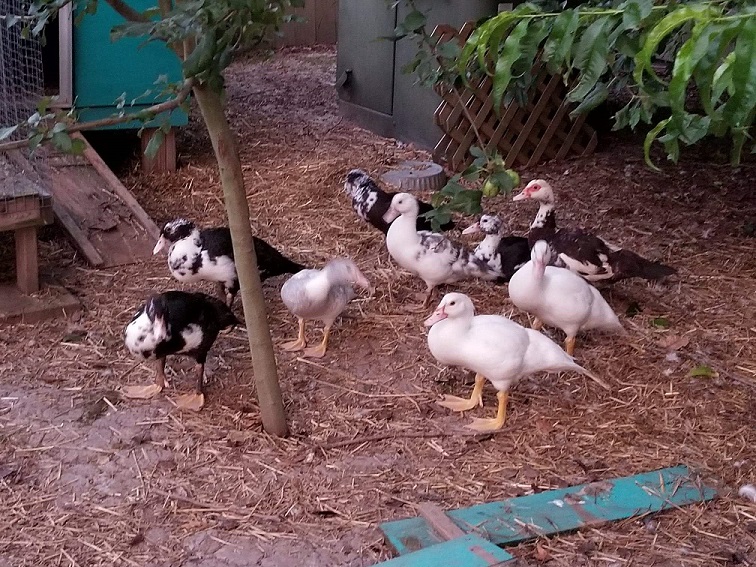
These ducks are entertaining to watch! They love playing in puddles, will do funky head bobs, tail wags, and follow each other around for hours! We are even more thankful to this breed because they provided our family eggs and meat during the pandemic and grocery store shortages. Our ducks provided through it all and are continuing to take care of us.
The Guardian Goose
I mention our recent addition of geese because this is an animal whose job is not age dependent. We got a breeding pair and our female goose is getting ready to sit on a nest. We may keep a couple of the goslings for protection of our meat poultry flocks during the summer months but the rest will be sold to others as flock protectors or additions!
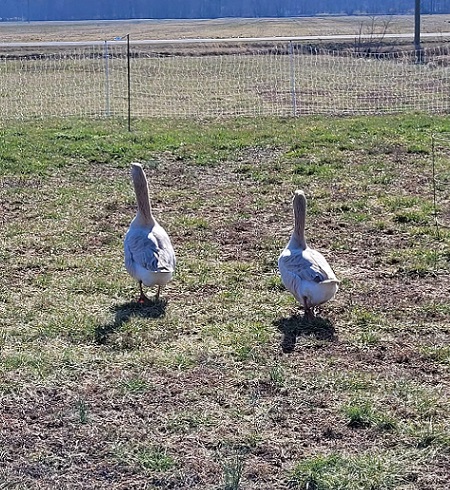
Turkeys
We are in our first year of keeping turkeys with the intention of maintaining a small breeding flock. Day old turkey poults are expensive! It is stressful for a bird to be shipped in the mail and turkeys already are considered weaker than chickens in those first weeks of life so you have to buy extra to account for losses. This is the perfect reason to start a sustainable flock on the homestead!
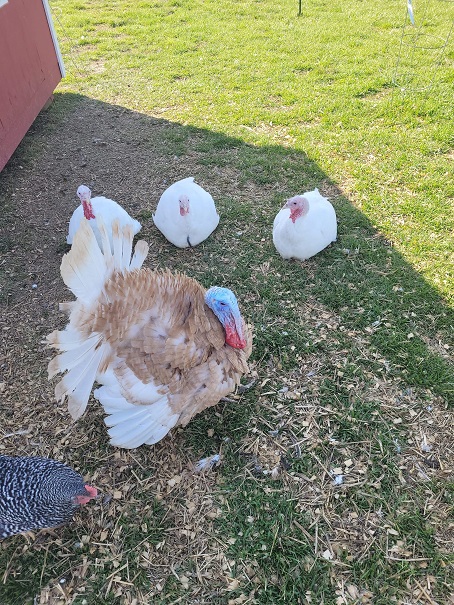
We have a heritage tom and 3 production broad breasted females which creates a dilemma.
Your normal turkey does not weigh 30-50lbs, our heritage tom is around 20lbs and all his hens are bigger than he is. The commercial turkey was bred to put on weight fast! So fast that they generally have leg issues from supporting the extra weight. These birds have a high potential for other health issues including heart attack. Even if the commercial breed turkey is not processed, they do not live for many years. (Making it into their 3rd year would be considered old!)
Our mindset is to allow these 3 hens to hatch some poults, providing a hybrid offspring in an attempt to merge the best of both breeds. They are on the homestead for meat after all. We only have one shot at this because the huge size of these turkeys hinders natural breeding. (Hatcheries use artificial insemination to continue the line – though young broad breasted hens can be bred to a heritage tom with success.) The 3 hens we have are laying eggs, time will tell if we are successful!
Why love the natural system? A hen or duck can provide for the baby poultry better, cheaper, and more naturally than we can. And brooding chicks and ducklings is a lot of work! I am fine allowing the birds to do what is natural and cutting us out of the loop because who doesn’t love seeing a mama bird with her babies closely behind?
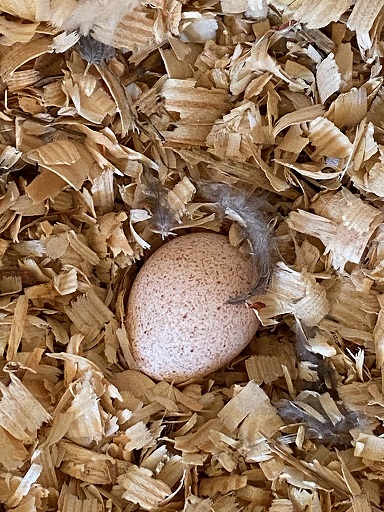
Our turkeys are some of the friendliest poultry on the homestead! They will often follow us around and sit while being petted. We will be processing the 3 hens in the fall, they already will be twice the age most of their breed make it to. They also may be the mothers of the future turkey flock on our homestead providing our holiday turkeys and additional meals for years to come.
The Meat Chicken
The most popular chicken you will see in the market is known as a cornish cross. Just like the broad breasted turkey, this chicken has been bred to convert food to meat and to do it fast! Like the broad breasted commercial turkey, allowing these chickens to go past the recommended butchering weight brings risk of leg injuries and heart attacks.
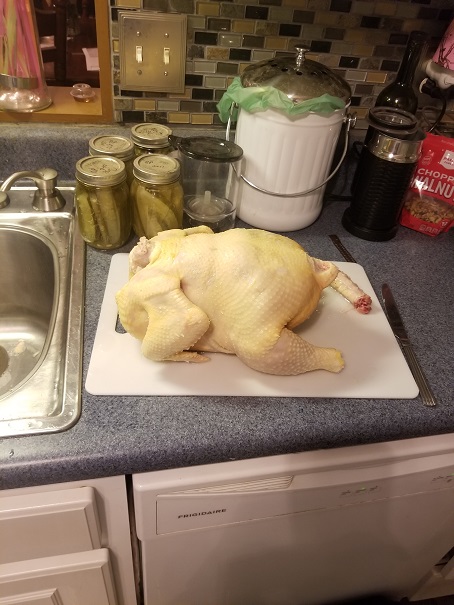
We have raised a few of these in the past, not in a dense setting like industry but with freedom to move in our yard. Our future batches of these chickens will be in a protected poultry netted area with that same ability to be a chicken and scratch the ground! We will regularly move them to fresh patches of grass to allow them to get to a variety of bugs and greens.
Though these birds tend to move less and less as they approach the 8-10 week point of butchering, ours have always had ample room and are not crowded wing to wing in a building. This extra space and not having them on top of each other will be a continued practice on our homestead.
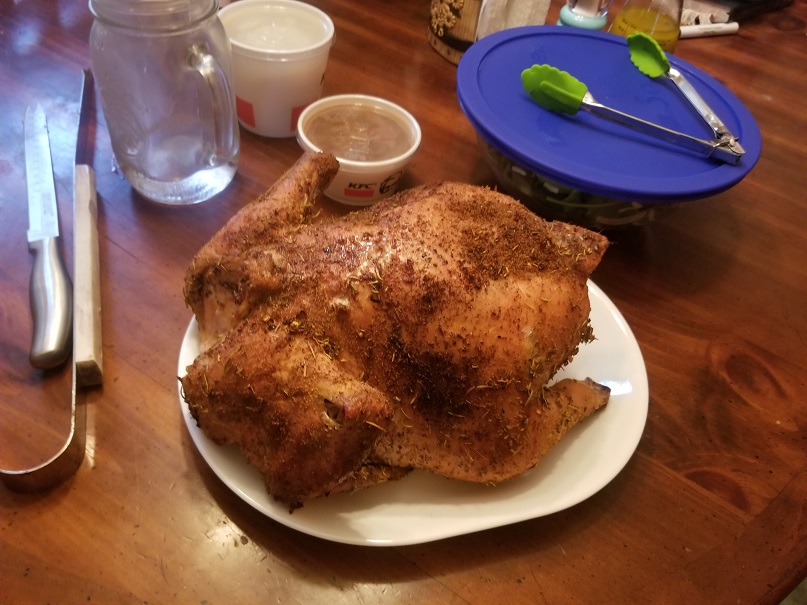
I admit these birds are easier to process than the chickens and ducks that spend more time with us. They are a life, raised from a baby chick, and then taken to provide for our family. Their purpose is to grow and be meat, but we will give them the best life we can during those months on our homestead.
The Meat Rabbit
Cute cuddly rabbits, how could you ever eat one? I admit, these have been emotionally the most difficult animals to process for us. In the end, they provided wonderful nutritious food for our family.
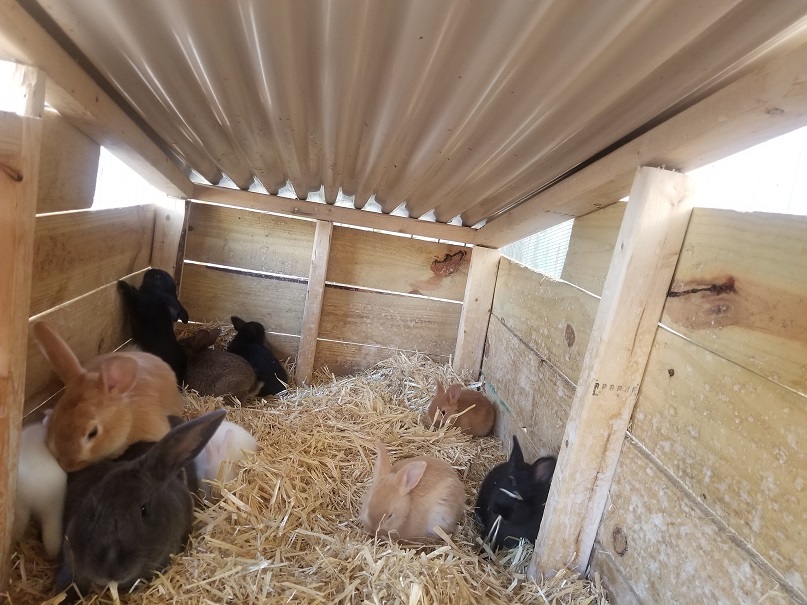
Our rabbits were raised in wire cages due to their ability to burrow and escape ground enclosures. Though they exist, I did not take the time to come up with a system of a ground rabbit tractor to keep them contained. They did escape an unlatched door a few times and were an extreme pain to try and catch. We have a whole post dedicated to raising rabbits here!
Where we differed in meat rabbits from traditional standards was allowing the rabbits to be a community. Most breeding and meat production programs have the does in individual runs where she will raise her litter until they are weaned for grow out, removed, and the cycle starts again. 8-12 weeks is the age of processing for rabbits. If you start going past that, the rabbits will start to become sexually mature and you could have the rabbit population rapidly expand. One month is a short gestation period!
We generally kept 2 does and 1 buck at all times. Each doe had a massive run, 3 times the size of a traditional meat rabbit system (I know because I removed divider walls) and would give birth to 4 or 5 litters a year. The litter would be 6 to 10 kits who would be raised with their mother until they were 12 weeks old. The rabbits were seldom a single rabbit in a cage but also were not constantly pregnant (a concern with community raising practices).
Our rabbits loved snacks from the garden! We would often treat them to extra salad greens and the occasional grass clippings. I would cut the grass with a reel mower for this reason. They even enjoyed some pears from the pear tree that gave them additional shade when in season.
*Fresh greens can cause health problems for young domesticated rabbits, we would wait to give them snacks until they were about 2 months old*
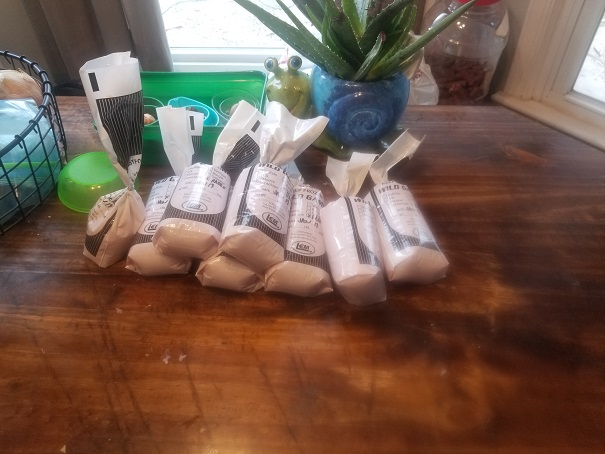
At about 3 months old, our rabbits would have their one bad day (as young as 2 months is used for some industry practices). Their first and only bad day. Outside of 1 incident, they never had a predator concern, always had food and water, were provided fresh greens and they were always with their family.
Conclusion
We love our animals and this aspect of homesteading is real and difficult. It is easy to go to the store and see some tasty piece of meat nicely packaged, maybe even already marinated, and take it home for dinner. That is the completely disconnected approach we had before starting this journey. Learn more about who we are here. When you pick that animal up as a baby, feed and water it every day of its life, and then ultimately take that life to feed your family, it is hard.
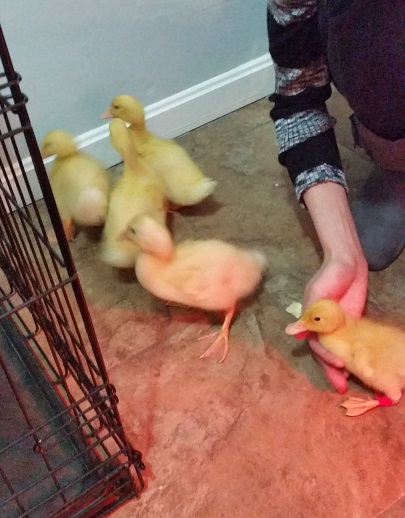
The challenge is real.
We know the cost of what that meal is on the table better than most. Our family chose to be involved in where our food comes from. We know the quality of life that animal lived before it became a meal for our family. And most important we respect our animals and take pride in knowing they are treated better than mass produced meat and we thank them and God for their one bad day.
